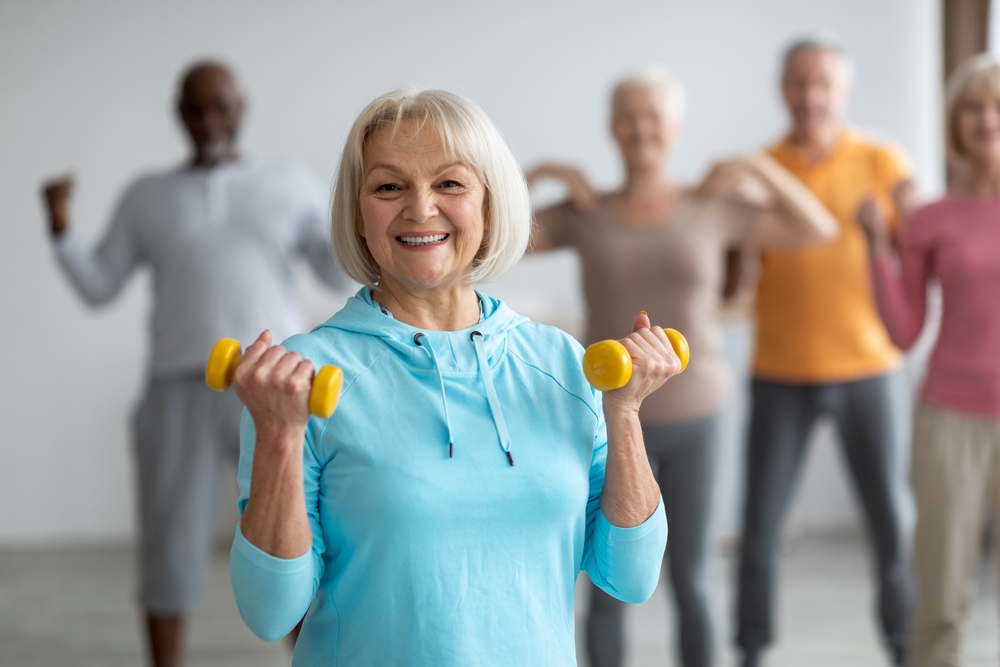Fitness for All Ages: Tailoring Workouts to Different Life Stages

Embarking on a fitness journey is a commitment that evolves alongside the ever-changing landscape of our lives. Fitness is not a one-size-fits-all endeavor; rather, it’s a dynamic process that requires tailored approaches to accommodate the diverse stages of our existence. In this comprehensive guide, we explore the profound significance of adapting workout routines to different life stages.
Whether in the bloom of youth, navigating the responsibilities of adulthood, or savoring the golden years, each phase demands a unique fitness strategy. Join us on a journey through childhood exuberance, the hustle of young adulthood, the stability of middle age, and the wisdom of senior years. Discover how customizing workouts to specific life stages not only enhances physical health but also contributes to mental well-being and fosters a sense of community. This exploration aims to empower individuals to embrace fitness as a lifelong companion, evolving with them every step of the way.
Understanding the Different Life Stages
Childhood and Adolescence
Childhood and adolescence lay the foundation for a lifetime of health. During these formative years, physical activity goes beyond structured workouts; it becomes a crucial component of developmental growth. Encouraging play, sports, and age-appropriate activities not only supports physical well-being but also nurtures social skills and teamwork. Parents and educators play a pivotal role in instilling healthy habits early on, setting the stage for a lifelong appreciation of fitness.
The Role of Play and Physical Activity in Childhood Development
Childhood is a time of boundless energy and exploration, and play serves as a crucial vehicle for holistic development. Activities such as running, jumping, climbing, and engaging in sports contribute not only to physical health but also to the enhancement of motor skills, coordination, and spatial awareness. Moreover, research indicates that active play is linked to improved concentration, academic performance, and the cultivation of positive attitudes toward a healthy lifestyle.
Parents, caregivers, and educators play pivotal roles in nurturing a love for physical activity during these early years. Creating environments that encourage active play, providing access to safe play spaces, and introducing children to a variety of sports lay the foundation for a lifelong relationship with fitness.
Young Adulthood
As individuals transition into young adulthood, the demands of a busy lifestyle can impact fitness routines. Balancing work, social commitments, and personal goals requires adaptable workout strategies. This stage is an ideal time to explore various workout styles and find activities that resonate with personal preferences. Incorporating social aspects into fitness routines, such as group classes or team sports, not only promotes physical health but also enhances overall well-being.
Balancing Fitness with a Busy Lifestyle
Young adulthood is often marked by a bustling schedule filled with academic pursuits, career aspirations, and social engagements. Amidst the whirlwind of activities, finding the time and energy for fitness can be a challenge. However, recognizing the importance of physical health as an integral part of overall well-being sets the stage for incorporating fitness into a busy lifestyle.
One approach to overcoming time constraints is to embrace short, high-intensity workouts. These time-efficient routines provide an effective cardiovascular and strength-training stimulus without requiring extended gym sessions. Additionally, incorporating physical activity into daily routines, such as walking or cycling to work, taking the stairs, or engaging in quick home workouts, helps seamlessly integrate fitness into a hectic schedule.
Middle Adulthood
Middle adulthood brings its own set of challenges, including the impact of aging on metabolism and muscle mass. Fitness during this stage is not just about appearance but becomes a key element in maintaining vitality. Strength training, flexibility exercises, and stress management through fitness activities become essential. Balancing career and family responsibilities, individuals in this stage benefit from workouts that fit seamlessly into their daily lives.
Addressing the Impact of Aging on Metabolism and Muscle Mass
One of the physiological changes that becomes more pronounced in middle adulthood is the impact of aging on metabolism and muscle mass. The body’s metabolism tends to slow down, making weight management potentially more challenging. Moreover, maintaining muscle mass becomes crucial for overall health and functional fitness.
In response to these changes, strength training takes center stage in middle adulthood. Resistance exercises, such as weightlifting and bodyweight workouts, help preserve and build lean muscle mass. This not only supports metabolism but also enhances functional strength, contributing to the ability to perform daily activities with ease.
Senior Years
Tailoring workouts to the specific needs of seniors is crucial for promoting health and independence. As the body undergoes changes, a focus on balance and mobility exercises becomes paramount for fall prevention. Community engagement and social connections through fitness classes or group activities contribute significantly to the overall well-being of seniors.
Tailoring Workouts to Accommodate Physical Limitations
As the body undergoes natural changes with age, adapting workouts to accommodate physical limitations is essential. Joint flexibility may decrease, and conditions such as arthritis may become more prevalent. Tailoring exercises to be joint-friendly, low-impact, and gentle on the body ensures that seniors can engage in physical activity without exacerbating existing conditions.
For individuals with mobility challenges, exercises that focus on balance and stability become particularly important. Activities like tai chi, water aerobics, and chair exercises offer a safe and effective way to enhance balance, reducing the risk of falls.
Benefits of Tailoring Workouts to Life Stages
Enhanced Long-Term Health
Adapting workouts to different life stages contributes to enhanced long-term health. Targeted exercises can help prevent age-related diseases, improve cardiovascular health, and maintain a healthy weight. The cumulative impact of consistent, age-appropriate fitness routines sets the foundation for a healthier, more resilient body over the years.
Mental Health and Cognitive Benefits
The benefits of tailored workouts extend beyond the physical realm, profoundly influencing mental health. Exercise has been linked to reduced stress, anxiety, and depression at every stage of life. Moreover, cognitive benefits, such as improved memory and cognitive function, highlight the powerful connection between physical activity and mental well-being.
Social Connections and Support
Customizing workouts to life stages fosters social connections and support systems. Engaging in age-appropriate group fitness or community activities creates a sense of belonging and camaraderie. The positive impact of social connections on mental and emotional well-being is a testament to the holistic benefits of tailoring fitness routines to the unique stages of our lives.
Creating Age-Appropriate Workout Plans
Assessing Individual Fitness Levels
Creating age-appropriate workout plans begins with a thorough assessment of individual fitness levels. Recognizing that each person is unique in terms of physical condition, goals, and limitations is crucial for tailoring effective and safe exercise routines. This personalized approach ensures that the workout plan aligns with an individual’s current capabilities while providing room for progress.
The Role of Fitness Assessments in Tailoring Workouts
Fitness assessments serve as the cornerstone of tailoring workouts to individual needs. These assessments can encompass various components, including cardiovascular fitness, muscular strength, flexibility, and body composition. By understanding baseline measurements, trainers and individuals alike gain insights into strengths and areas that require improvement.
The assessment process may involve exercises like timed walks, strength tests, and flexibility assessments. It provides a comprehensive picture of an individual’s current fitness status, allowing for the creation of targeted workout plans that address specific areas of improvement. Regular reassessments over time enable adjustments to the workout plan, ensuring continued progress and adaptation to changing fitness levels.
Recognizing Individual Goals and Limitations
Individuals embark on fitness journeys with diverse goals, whether it’s weight loss, muscle gain, improved endurance, or overall well-being. Understanding these goals is essential for tailoring workout plans that align with personal aspirations. Moreover, recognizing any physical limitations or health considerations is equally crucial to ensure that exercises chosen are safe and appropriate for the individual.
Trainers and fitness professionals play a vital role in guiding individuals through this process. Through open communication and a thorough understanding of an individual’s aspirations and constraints, personalized workout plans can be designed. This approach fosters a collaborative and supportive environment, encouraging adherence to the workout routine.
Incorporating Variety and Adaptability
The Importance of Incorporating Diverse Exercises
A well-rounded workout plan incorporates a variety of exercises that target different muscle groups and fitness components. This diversity not only enhances overall fitness but also keeps workouts engaging and enjoyable. Including cardiovascular exercises, strength training, flexibility routines, and balance activities contributes to a comprehensive approach that benefits the body and mind.
Cardiovascular exercises, such as running, cycling, or swimming, promote heart health and endurance. Strength training, whether using weights or bodyweight exercises, builds and tones muscles. Flexibility exercises, like yoga or stretching routines, enhance range of motion and reduce the risk of injuries. Balancing activities, especially important for certain age groups, contribute to stability and fall prevention.
How to Adapt Workouts as Individuals Progress
As individuals progress in their fitness journey or transition between life stages, workout plans need to adapt accordingly. What worked for a teenager may need adjustments for a young adult or a senior. Monitoring progress and reassessing fitness levels at regular intervals allow for modifications that align with changing goals and capabilities.
Adaptability is key to long-term success in fitness. Modifications can include adjusting exercise intensity, incorporating new exercises, or altering workout frequency. For example, a shift from high-impact to low-impact exercises may be suitable for those with joint concerns. By embracing adaptability, individuals can sustain their commitment to fitness throughout different life stages, ensuring that the workout plan evolves in harmony with their changing needs.
Seeking Professional Guidance
The Benefits of Consulting with Fitness Professionals
Seeking professional guidance is a valuable step in creating age-appropriate workout plans. Fitness professionals, such as personal trainers or exercise physiologists, possess the knowledge and expertise to tailor routines based on individual needs. Their guidance ensures that workouts are safe, effective, and aligned with specific goals.
Professional support becomes particularly crucial for those navigating new life stages or dealing with specific health considerations. Trainers can design exercises that accommodate physical limitations, provide modifications when necessary, and offer motivational support. Moreover, the educational aspect of working with fitness professionals empowers individuals with the knowledge to make informed decisions about their health and fitness.
Customizing Workout Plans with Personal Trainers
Engaging the services of a personal trainer goes beyond just having a workout plan; it involves a collaborative journey toward achieving fitness goals. Personal trainers assess individual fitness levels, listen to goals, and customize routines that challenge and inspire. Their expertise allows for the creation of balanced and effective workout plans that evolve with the individual’s progress.
Additionally, the accountability and motivation provided by personal trainers contribute significantly to adherence. Having a professional guide and support system enhances the overall fitness experience. Whether it’s adjusting exercises, providing nutritional guidance, or offering encouragement during challenging moments, personal trainers play a pivotal role in ensuring the success of age-appropriate workout plans.
Empowering Your Fitness Journey with Fitness CF
Tailoring workouts to different life stages is not merely a fitness strategy; it’s a holistic approach to well-being that acknowledges the ever-changing dynamics of our lives. From the exuberance of childhood to the wisdom of senior years, each stage demands a unique fitness perspective. Recognizing the importance of age-appropriate exercises, diverse routines, and professional guidance ensures that individuals can embrace fitness as a lifelong companion. The benefits extend beyond physical health to encompass mental well-being, social connections, and enhanced quality of life.
As you navigate the distinct chapters of your fitness journey, remember that Fitness CF is here to support you at every stage. Contact us for personalized fitness plans, expert guidance, and a community that shares your commitment to a healthier, more vibrant life. Your journey to wellness begins with a tailored approach – let Fitness CF be your partner every step of the way.







